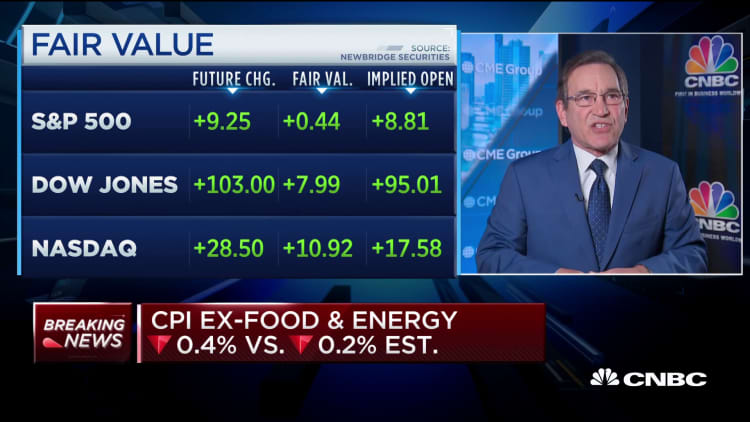
Consumer prices in April took their biggest drop in history going back to at least 1957 as the economy reeled from restrictions imposed to control the coronavirus.
The Bureau of Labor Statistics reported Tuesday that the CPI excluding food and energy prices slumped 0.4%, the steepest monthly drop since records have been kept.
While the decline in prices was broad-based, the biggest swoons in the "core" part of the index came in apparel and transportation services, which dropped 4.7% apiece. Commodities not including food and energy fell 0.7% and medical care services prices were off 0.5%.
Used cars saw a 0.4% decline amid a slide in auto sales.
Big drops within the categories were car and truck rentals (-16.6%), airline fares (-15.2%) and men's suits (-11.3%).
On a year-over-year basis, core CPI rose 1.4%, the smallest move since April 2011.
The moves come amid a series of fiscal and monetary moves aimed at juicing economic activity. Rescue efforts from both sides have been unprecedented in dollar amount and breadth, but come amid an economy frozen in place that will see a drop in GDP for the second quarter that will be unparalleled.
The Federal Reserve continues to pump money into the economy amid a deflationary threat and an unemployment situation at its worst point since the Great Depression.
"The Federal Reserve should be more worried about deflation, when prices are falling broadly in the economy, rather than inflation, when prices are rising. If deflation becomes embedded in the economy, it can be difficult to uproot," said Gus Faucher, chief economist at PNC. "If prices are falling, consumers and businesses may wait to make purchases, assuming that prices will be even lower in the future; this can exacerbate economic downturns."
Headline CPI, which included huge drops in energy but big jumps in food costs, fell 0.8% and was up just 0.3% from a year ago. The index for cereals and bakery products, for instance, rose 2.9% in April for its largest monthly increase ever.
Food at home prices increased 2.6% as part of a broader 1.5% move higher in the overall category. A number of categories saw major spikes as Americans came under stay-at-home orders.
Energy prices were off 10.1% for the month, due in part to a 20.6% plunge in gasoline.
Economists largely expect inflation to remain time at least until the economy gets back on normal footing. Morgan Stanley forecasts that stimulative policies will cause a return of inflation, but likely not for about two years, and the data Tuesday confirm the near-term expectations.
"Over the very long term it is entirely possible, and perhaps even likely, that the policy response to this crisis will push prices higher as massive fiscal stimulus filters into the economy. But for that to happen, demand has to be back on a more normal footing, and we simply aren't there right now," said Eric Winograd, senior economist at AllianceBernstein.


